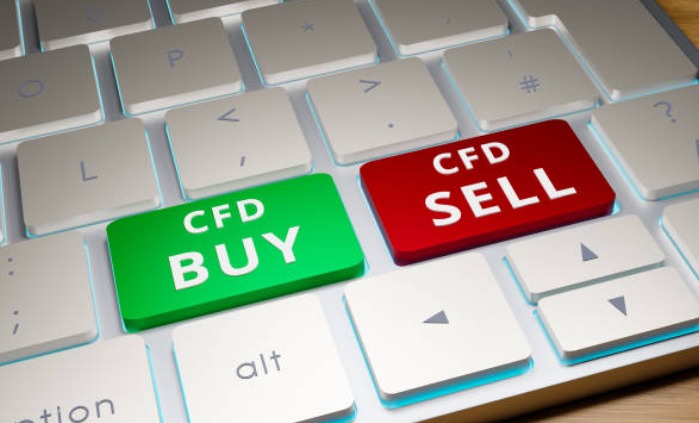
It’s easy to get overwhelmed by the sheer volume of information and the complexity of the financial markets. But what if I told you that the key to mastering CFD trading lies in the tools you use? That’s right, the trading platform you choose can make or break your success in this high-stakes game. Let’s explore how CFD trading and trading platforms are intertwined and why the latter is crucial for your journey as a trader.
The Essence of CFD Trading
CFD trading, or Contract for Difference trading, is a financial derivative that allows you to speculate on the price movements of an underlying asset without actually owning the asset. This means you can trade on the fluctuations in the value of stocks, indices, commodities, and currencies, among others, through a CFD. The appeal of cfd trading is that it offers leverage, which magnifies your potential profits (and losses). It’s a double-edged sword, though, as the leverage can work against you just as easily as it can work in your favor.
Navigating the Trading Platforms
When you’re ready to dive into CFD trading, the first thing you’ll need is a trading platform. This is where the rubber meets the road. A trading platform is your gateway to the markets, providing you with the tools and data you need to make informed decisions. It’s not just about buying and selling; it’s about analyzing, strategizing, and executing trades with precision.
Features That Matter
Not all trading platforms are created equal. Some are more suited for beginners, while others cater to the needs of experienced traders. Here are a few features that can make a significant difference in your CFD trading experience:
- User Interface: A clean, intuitive interface can make all the difference. It should be easy to navigate and understand, even for those new to CFD trading.
- Charting Tools: Advanced charting tools are essential for technical analysis. Look for platforms that offer a wide range of indicators and drawing tools.
- Leverage and Margin: Understanding leverage and how it affects your margin is crucial. The platform should provide clear information on these aspects to help you manage your risk effectively.
- Execution Speed: In the fast-paced world of CFD trading, speed is everything. Look for a platform that offers fast execution times to ensure your trades are placed promptly.
- Customer Support: Reliable customer support can be a lifesaver, especially when you encounter issues or have questions about your trades.
The Impact of Technology
Technology has revolutionized CFD trading, making it more accessible and efficient than ever before. Trading platforms now offer a plethora of tools and features that were once reserved for institutional traders. Here’s how technology has shaped the modern trading platform:
- Automated Trading: Algorithms and bots can now execute trades on your behalf, based on predefined criteria. This can be a game-changer for those looking to automate their CFD trading strategies.
- Mobile Trading: The ability to trade on-the-go through mobile apps has opened up new opportunities for traders. You can now monitor and execute trades from anywhere, at any time.
- Social Trading: Some platforms offer social trading features, allowing you to follow and copy the trades of successful traders. This can be a valuable learning tool and a way to diversify your strategies.
- Educational Resources: Many platforms now include educational resources, such as webinars, tutorials, and e-books, to help traders improve their skills and knowledge.
Risk Management in CFD Trading
Risk management is a critical aspect of CFD trading. It’s not just about making profits; it’s about protecting your capital and minimizing losses. Here’s how a trading platform can assist you in managing risk:
- Stop Loss and Take Profit Orders: These orders automatically close your trade when it reaches a certain price, helping you to limit your losses and lock in profits.
- Position Sizing: A good platform will help you determine the appropriate size for your trades based on your account balance and risk tolerance.
- Risk Alerts: Some platforms offer risk alerts that notify you when your account is approaching a critical risk level, giving you the opportunity to take action.
The Role of Regulation and Security
In the world of CFD trading, regulation and security are paramount. A regulated trading platform ensures that your trades are executed fairly and that your funds are safe. Look for platforms that are regulated by reputable financial authorities. Additionally, ensure that the platform uses the latest security measures to protect your personal and financial information.
Building a Winning Strategy
A successful CFD trading strategy doesn’t just happen overnight. It requires time, patience, and a lot of practice. Your trading platform can be a valuable ally in this process:
- Backtesting: Many platforms offer backtesting tools that allow you to test your trading strategies on historical data. This can help you refine your approach and identify potential weaknesses.
- Real-time Data: Access to real-time market data is crucial for making informed decisions. A good platform will provide you with the data you need to stay ahead of the markets.
- Performance Analytics: Analyzing your trading performance is key to improvement. Look for platforms that offer detailed performance reports to help you understand where you’re making profits and where you’re losing.
Conclusion
Mastering CFD trading is a journey that requires the right tools and the right mindset. A trading platform is more than just a place to execute trades; it’s your partner in navigating the complex world of financial markets. By choosing a platform that offers the features, tools, and support you need, you can enhance your trading experience and increase your chances of success in CFD trading.
Leave a Reply